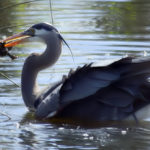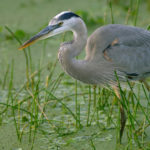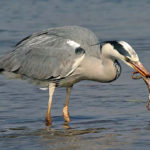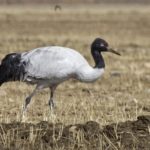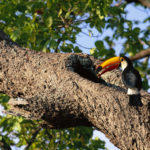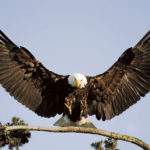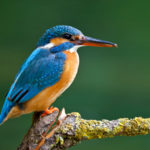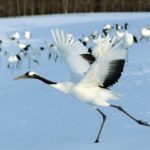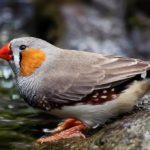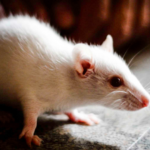Herons
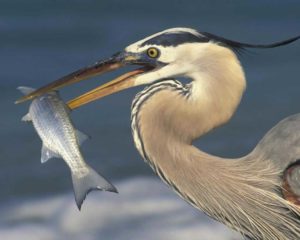 Herons – a large group of wiggly birds, leading a near-water way of life. Herons belong to the family of the same name, the Aistoid group, numbering 62 species. The sizes of herons vary widely: the smallest species reach a height of 40-60 cm, the largest giant heron reaches a height of 1.4 m, the average weight of these birds is 1-2.5 kg. The appearance of herons is very recognizable, it has a long straight beak, a long neck, a short, pointed tail and long thin legs, with tenacious fingers. In a calm environment, herons keep the neck half-folded, during the hunt they stretch, but the bend of their neck is ugly, as if with a kink. In this position, birds often resemble a dry branch.
Herons – a large group of wiggly birds, leading a near-water way of life. Herons belong to the family of the same name, the Aistoid group, numbering 62 species. The sizes of herons vary widely: the smallest species reach a height of 40-60 cm, the largest giant heron reaches a height of 1.4 m, the average weight of these birds is 1-2.5 kg. The appearance of herons is very recognizable, it has a long straight beak, a long neck, a short, pointed tail and long thin legs, with tenacious fingers. In a calm environment, herons keep the neck half-folded, during the hunt they stretch, but the bend of their neck is ugly, as if with a kink. In this position, birds often resemble a dry branch.
Powdered fountain powder, which produces powder, herons cover their plumage. Due to this feature, the feathering of the heron is not protected from wetting, so they do not swim or dive. Plumage of herons is smooth, adherent, often there is a small tuft on the head. The coloration of these birds is more often monotonous – gray, white, black, red, less often bicolour (for example, in the heron heron black and white), the beak is usually yellow, less often black, the paws are dark. Sexual dimorphism is weakly expressed, males slightly larger than females, in the mating season some species of herons acquire feather ornaments, but even in this case males and females almost do not differ from each other.
Herons are widespread all over the world very widely, they are found on all continents and on some oceanic islands (Galapagos, for example). There are none in the Antarctic and the circumpolar regions of the Northern Hemisphere. The range of different species differs in size, for example, the large white heron is found on almost all continents, while the Madagascar habitat lives only on Madagascar and the nearby islands. Everywhere herons are tied somehow to ponds, they inhabit marshes, mangroves, floodplains and deltas of rivers, lakes, wet meadows and reed thickets.
On the banks of large bodies of water with extensive open areas herons are rare. Most species are colonial and are kept in groups of 15-100 individuals, but these formations are unstable. Firstly, dense flocks of herons do not form, rather they keep close to each other. Secondly, large colonies exist only in places rich in food, on the banks of small streams herons are dispersed and nest at a distance. Finally, a number of species are always found only one by one (a giant heron).
Populations of tropical areas are sedentary, populations from the temperate zone make seasonal migrations. As a rule, herons from Europe and the northern regions of Asia fly for wintering in South Asia, Southern Europe and Africa. Herons from North America fly to winter in South and Central America. Birds fly away in September-October, arrive in March-May. The herons take off from the earth easily and quickly, but their flight is heavy and slow, with great speed they fly only to escape from enemies. Thus, the speed of their movement reaches 24-50 km / hour. During flights, herons never form a wedge, in general their migration is not evident.
Egrets are fed by a variety of aquatic and near-water animals – fish, fry, tadpoles, adult frogs and toads, newts, snakes, snakes, lizards, mollusks, crustaceans, insects. On occasion, they may also hunt warm-blooded animals: they catch chicks of gulls, mouse rodents and even moles. These birds practice hunting from ambush, and do it in several ways. Sometimes a heron slowly walks through the shallows, long dying in one place and looking closely. After seeing the prey, she quickly grabs her.
